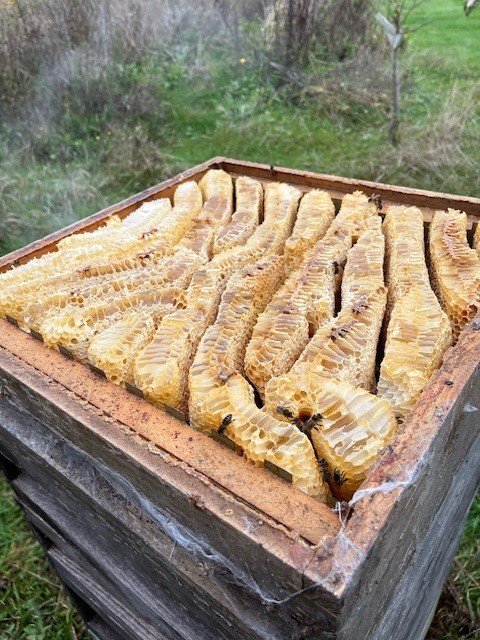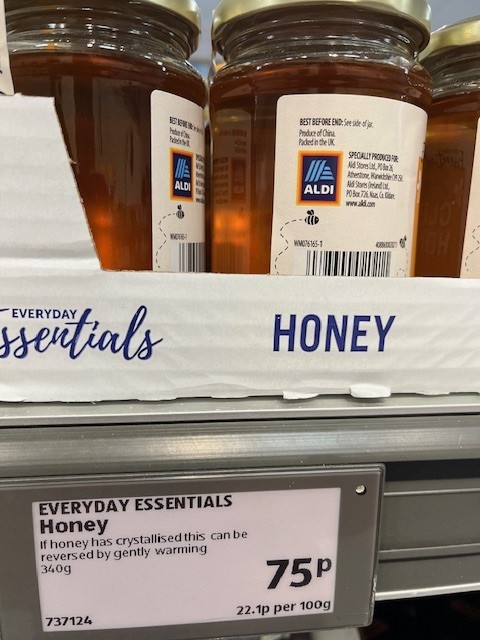As normal, the month started off mild but ‘very wet’ confining colonies to their hives when the Ivy was in full flower.
On those mild days when temperatures rose and it stopped raining, every ‘worker bee’ that could be spared was out working the Ivy flowers and any other plant they could find still in bloom.
Then we had our first ground frost of the season which set everybody back, reducing nectar flow and prevented most hives from flying.
I’m always amazed how some hives, normally very dark bees, are out in cold temperatures well before others in the Apiary. These are the ones to breed from next spring locally adapted bees.
By the end of the month we should have finished feeding any syrup and most of the Fondant we have put on will have been taken down into the brood chamber ready for use over the next few months of the winter.
All we need to do is ensure hives are water and wind proof, mouse guards on and with Woodpecker protection on.
The Autumn colours are beautiful again this year and a visit to the Batsford Arboretum revealed some outstanding colours and the below sign.

The wicker fence has been constructed in front of what appears to be a hollow wall where four colonies of bees have taken up residence and appear to be thriving.
Typical Beekeeper, I had to go behind the fence to see what was going on before going into the Antique Tool Collection Display including a very old honey extractor!

As you can see all very dark bees which have adapted well to their wall hives.
As we have the traditional flowers in our gardens like the Michealmas Daisies flowering in October, we now have o load of more exotic plants from all over the world which the bees, bumble, solitary or honey will use as they supplement the last of the winters stores of nectar and pollen.




Some hives continue to catch us out and when I took a roof off one recently, found the colony had filled two supers and then the empty super above the crown board.
Well, supers off to extract and wild comb will help with the winter supply of stores to be sorted out next spring.

End of the month last of the Nasturtium flowers:

Next Month: Expect more cold and we take time to observe hives, check the Varroa drop and plan any treatment in December when cold deters the Queen from laying and we get a brood gap.
The opposition? – Made in China?

Well, what Bee is this?
Clearly not a Honey Bee.


